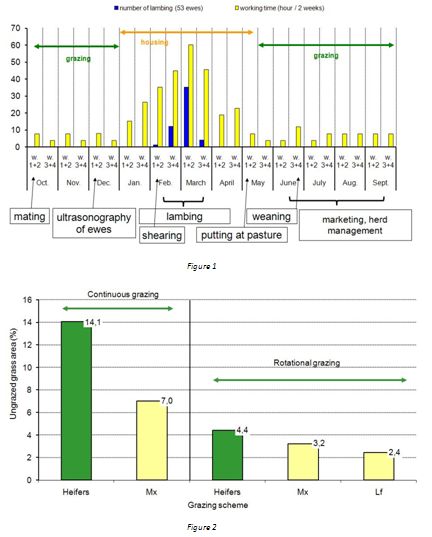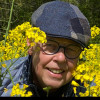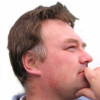Context
Grazing remains an interesting basal diet for suckling cows as it does not need any harvest while leading to good animal performance. So it is the cheapest way to feed cattle from spring till autumn (0.40 to 049 € per animal per day respectively for heifers and young bulls). At the end of a last 3 years project, we can conclude that grazing heifers can reach a growth of 0.750 kg per day. With such performances, it is possible to achieve early calving. In the same way, with a low level of complement (1 kg per day per animal), ADG of young bulls can reach 0.850 to 1 kg.Nevertheless, to reach such performance levels, it is necessary to propose all across the season a good quality grass in sufficiency. These both parameters change with season and according to the pasture management or plant development stage. So that, in a rotational grazing system, grass availability and quality decrease continuously since cattle introduction on a new paddock. To maintain good level of performances, grazing time on the paddock could be reduced. However, important residual grass quantity could be prejudicial to the pasture (plant cover degradation, installation of undesirable species or species of less nutritional value, …).At grazing, sheep behaviour is different and complementary to cattle behaviour. Sheep could reach smaller sward surface height and, according to their small bite size, they have a bigger capacity to select their diet. To use this "sheep-cattle" complementarity could allow to insure both good animal performances and high quality sward persistence.
Objectives
The objective of this study is to define pasture managements rules to conciliate good animal performances and high quality sward persistence. One solution could lies in the exploitation of cattle-sheep complementarity in regard to pasture exploitation.The proposed associations regroup, for 2 studied grazing schemes, suckling heifers and ewes with lambs in a ‘leader-follower’ or in simultaneous mixed grazing systems. These both modalities are compared to the separate grazing systems of the both animal species.Such diversification could also promote sheep-meat production. This one appears to be an interesting possibility because Belgium is not self-sufficient in this sector and sheep production remains associated with a positive consumers’ assessment. Such considerations sustain sheep meat price. Added to these economical advantages, sheep – cattle association under grazing could also facilitate the gastro-intestinal parasitism management. Indeed cattle contamination occurs essentially when they are forced to graze to a small residual sward height.Economical aspect, working time and environmental impact of these different pasture managements are also evaluated.Results obtained
Sheep PRODUCTION unit In this project, sheep breed selected is a ‘grazing sheep’ : the ‘Swifter’. Their principal characteristics are : a high fertility, a long reproduction period, a good dairy production and a production of lambs of rather good conformation. Swifter ewes lamb easily (most lambing in March) and are very motherly.Reproduction parameters of our herd, including 10 primiparous and 40 multiparous ewes, are characteristic of this breed. The prolificacy is high with 1.84, 2.64 and 2.92 born lamb per lambing respectively for primiparous ewes, ewes in second and third lambing years. In sheep housing, lamb performances are on average, and with hay as only supplement, 230 g per day what reflecting the good milk production of ewes. Additional working related to the introduction of ewes in the farm are due to the breeding and lambing activities as illustrated at Figure 1. Along the year, paring claws (1 to 2 days), giving anthelmintics (3 to 4 days), monitoring of the herd, grouping individuals (preparation for reproduction, mating, sorting lambs, ...) maintenance of fences, production of fodder stocks are all operations that must also take into account.
grazing management and Grazing performances At grazing, different modalities have been compared, separate grazing of cattle : Belgian Blue White heifers in continuous grazing (HC) or in rotational grazing on 3 or 4 paddocks (HR) and sheep : ewe with lambs in continuous grazing (SC); simultaneous mixed grazing on a continuous or rotational scheme (MxR and MxC) and leader-follower grazing (Lf), ewes following heifers on the paddocks. For the MxR and Lf systems, grazing were organised on 4 or 6 paddocks. The MxC was only tested the fourth grazing season (2007).For the first grazing season (2004), stocking rates were established to be similar between the grazing managements (2.9 to 3.1 total Livestock Unit (LU) /ha). For the second and third grazing seasons, cattle stocking rates were similar between grazing schemes (2.8 to 2.9 cattle LU /ha), sheep came in supplement to reach 3.6 to 3.8 total LU /ha for the mixed grazings.Compared to the 2004 grazing season, to increase the stocking rate with sheep (mixed grazing systems) don’t modify the performances of heifers. No difference between grazing scheme is observed, heifers growth are ranged between 0.657 and 0.705 kg/days for all tested modalities. It is a significant effect of the year on the growth of suckling lamb (ADG = 371; 229; and 184 g/day respectively for 2004, 2005 and 2006). To explain this difference, the best hypothesis remains the size of the suckling litter. Indeed, on average, the number of suckling lamb per ewes was 1.75; 2.06; and 2.51 respectively for 2004, 2005 and 2006. Consequently, more is the number of sucking lamb per ewes, lower are the lamb performances. Grazing schemes have a significant influence on lamb performances at pasture. Lamb growth is higher for the simultaneous mixed grazing (MxR and MxC) with more than 250 g/day from the beginning of May to weaning. Lamb growing for SC and Lf is 40 g/day lower.Grazing schemes have significantly influenced the ewes and the ewe lambs performances. So that in the middle of August, ewes grazing in the simultaneous systems are heavier while the Lf ewes are the lightest, their growths are nul or negative between weaning and August. That lower performances can be partly explained by a lower quality of grass that the ewes can not compensate by a higher intake.According to these results we can conclude that the presence of sheep don’t influence the heifers growth. Grazing is sufficient to cover growth and lactation needs of ewes and growth needs of lambs or heifers. Concerning the pasture characteristics, the impact of the sheep grazing appears on the level of the proportion of ungrazed grass in the pasture. It is a decrease of refusals in the mixed grazing schemes (Mx and Lf) compared to the separate grazing of cattle or sheep (Figure 2). It is also a decrease of white clover proportion when sheep or cattle graze alone in a continuous system.
Parasitic pressure and grazing management The level of parasitic infestation has been evaluated by serum pepsinogen analysis and by a coproscopic analysis of faeces.In July 2004, for the Mx system (total stocking rate 3.1 LU/ha and sheep-cattle ratio 1.3), the pepsinogen serum level of heifers was lower than that of other heifers grazing systems. At this moment, copropscopic analyses are higher for heifers of HR group and their performances are the lowest. This suggests that in these conditions, the sheep are playing their role of cleaning pasture from cattle parasites. In July 2005 and 2006, with a higher total stocking rate (3.6 LU /ha) and a sheep-cattle ratio unchanged, we get the opposite results. For the Mx grazing systems, increasing the stocking rate probably leads to a greater competition between the 2 animal species. Heifers were forced to graze to a small residual sward height, with accordingly higher infestation with gastro-intestinal parasite. The association had any effect on the rate of parasitic infestation of sheep, which was particularly low during the 3 grazing seasons of that trial. Therefore, the ‘cleaner’ effect of sheep depends primarily on the stocking rate and climatic conditions. If the animals are forced to graze closer to the ground (case of years with less grass availability for example), the sheep seem to have few influence on the infestation of cattle.
environmental impact of the association To assess the environmental pressure, soil samples (0 to 30 cm) were sampled in each grazed paddocks at the end of the grazing season (last two weeks of October). Nitrate level (NNO3--kg /ha) of soil samples was determined. Note at once the great variability of the results : averaged range of 14 to 40 kg NNO3 by ha on a year basis. On average for the 3 years, it is for HC paddocks that residual nitrogen in the soil is the highest (50 kg /ha). The residual nitrogen reported for SC paddocks is particularly low, with some 7 kg / ha.
In the range of studied stocking rate, the sheep-cattle association has had little impact on the potentially leachable nitrogen (residual nitrogen of Mx and Lf paddocks less than 40 kg / ha).
Partners
Wallon Region (D33) : financial participation.Local breeders : lending of experimental animals.
CRAW off coordinator
Ir. Virginie Decruyenaere
CRA-W – Section Systèmes agricoles
Rue de Serpont, 100
B-6800 Libramont-Chevigny
Tel. : +32 (0)61 23 10 10
Fax : +32 (0)61 23 10 28
Email : decruyenaere@cra.wallonie.be
Funding
- DGARNE





